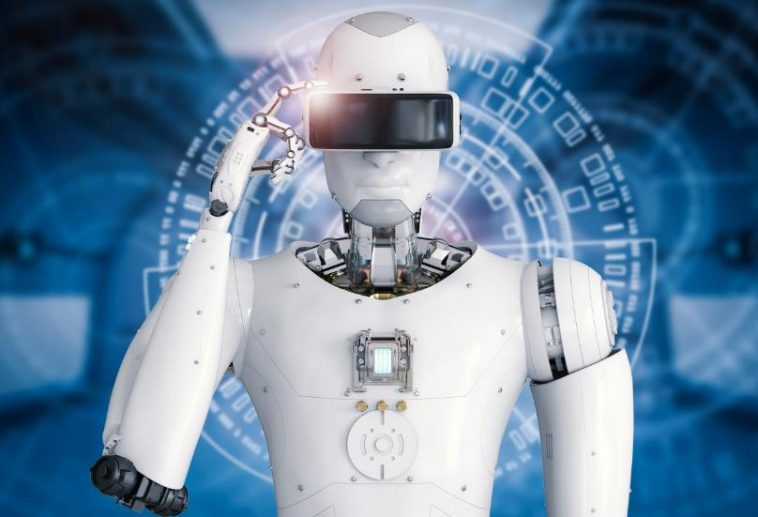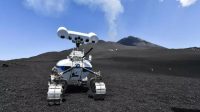With the widespread emergence of industrial automation and intelligent needs using image and machine vision technology in all walks of life, machine vision has gradually begun to be applied in industrial sites.
A typical machine vision application system includes image capture, light source system, image digitization module, digital image processing module, intelligent judgment decision module and mechanical control execution module.
In general, machine vision is a comprehensive technology that combines software and hardware. It requires software to process images and hardware to provide stable and high-quality images. Both are equally important. As a development, the software modules are relatively familiar, and the relevant knowledge of the hardware system is weaker. This article makes a simple summary of the hardware-related resources in machine vision. Interested friends may wish to refer to it.
abstract:
1. Industrial computer
The industrial computer can be understood as a PC host, but this host is stronger in image acquisition and processing, as well as related controls and interfaces. In the machine vision system, the performance of the industrial computer directly affects the processing speed and running time of the entire vision system, and is the key to the entire vision system. The selection of industrial computer needs to consider the following four aspects:
1) Dimensions
2) Installation method
3) Configuration
——You can choose the appropriate configuration according to your own application.
4) Interface
——-It is very important to determine the number of cameras, light source controllers and connection methods in the vision system. For example, there are 8 cameras in the system, 4 light sources need to be controlled, the cameras are connected by network cables, and the light source controller is 232 interfaces, so the number of network interfaces and serial ports of the industrial computer can be determined.
2. Camera
2.1 Camera Type
Dot camera/area camera
Area scan camera: What is achieved is pixel matrix shooting. In the image captured by the camera, the details of the image are not determined by the number of pixels, but by the resolution. The resolution is determined by the focal length of the selected lens. For the same camera, different focal length lenses are used, and the resolution is different. The number of pixels does not determine the resolution (sharpness) of the image, so what are the benefits of a large pixel camera? There is only one answer: reduce the number of shots and increase the test speed.
Line scan camera: As the name suggests, it is “line” shaped. Although it is also a two-dimensional image, it is extremely long. A few K in length, but only a few pixels in width. Generally, this kind of camera is only used in two situations: First, the measured field of view is a slender strip, which is mostly used for detection on the drum.
Second, the need for a great field of view or extremely high precision. In the second case (requiring a very large field of view or very high precision), it is necessary to excite the camera multiple times with the excitation device, take multiple pictures, and then combine the multiple “stripe” images taken. into a huge picture.
Therefore, when using a line scan camera, a capture card that can support the line scan camera must be used. Line scan cameras are expensive, and in the case of large field of view or high-precision detection, the detection speed is also slow – the image of the general camera is 400K ~ 1M, and the combined image is as large as several M, and the speed It’s naturally slow. Work slowly and work hard. For these two reasons, line scan cameras are only used in very special cases.
CCD camera/CMOS camera
CCD cameras can provide good image quality and anti-noise ability. Although the size of the system is increased due to the addition of external circuits, and the reproduction is improved, circuit designers can be more flexible and better improve some special concerns of CCD cameras. performance. CCDs are more suitable for applications that require very high camera performance and less stringent cost control, such as astronomy, high-definition medical X-ray images, and other applications that require long-term exposure and stricter image noise requirements.
CMOS cameras have the advantages of high yield, high integration, low power consumption, and low price. But the image itself has more noise. The current CMOS technology continues to develop, has overcome many of the early shortcomings, and has developed to a level that can be compared with CCD technology in terms of image quality.
CMOS is suitable for occasions that require small space, small size, and low power consumption, but the requirements for image noise and quality are not particularly high. Such as most auxiliary lighting industrial inspection applications, security applications, and most consumer commercial digital cameras. At present, CCD industrial cameras still occupy a dominant position in visual inspection solutions.
2.2 Resolution
The number of pixels of the image captured by the camera each time generally corresponds to the number of pixels arranged on the target surface of the photoelectric sensor. The choice of resolution also needs to be determined according to the usage scenario and accuracy requirements, not the higher the better.
2.3 pixel depth
The number of bits per pixel data, the common ones are 8bit, 10bit, 12bit. Resolution and pixel depth together determine the size of the image. For example, for 5 million pixels with a pixel depth of 8bit, the entire image should have 5 million*8/1024/1024=37M (1024Byte=1KB, 1024KB=1M). Increasing the pixel depth increases the accuracy of the measurement, but it also reduces the speed of the system and increases the difficulty of system integration (increased cables, larger size, etc.).
2.4 frame rate
The speed at which the camera captures and transmits images, generally the number of frames per second (Frames/Sec) for area scan cameras, and the number of lines per second (HZ) for line scan cameras. Scenes.
2.5 Exposure
Industrial line scan cameras are all line-by-line exposure methods. Fixed line frequency and external trigger synchronization can be selected. The exposure time can be consistent with the line period, or a fixed time can be set; area scan cameras have frame exposure and field exposure. And several common methods of rolling exposure, industrial digital cameras generally provide the function of external trigger image acquisition, the shutter speed can generally reach 10ms, and high-speed cameras will be faster.
2.6 Noise
Noise refers to signals other than the actual imaging target that are not expected to be collected during the imaging process. Generally divided into two categories, one is the shot noise brought by the effective signal, which exists for any camera; the other is the inherent signal-independent noise of the camera itself. It is due to the inherent noise caused by the image sensor readout circuit, camera signal processing and amplification circuit, and the inherent noise of each camera is different.
2.7 Development interface
For the development of visual projects with cameras, the control of the camera (photographing, recording, saving, setting parameters, etc.) is essential. Generally, manufacturers will provide control demos, and the control functions need to be applied to our projects during development.
3. Lens
The camera and the lens are generally matched. The selection of the lens mainly considers the visual distance of the image. The lens selection steps:
1) Calculate the number of pixels corresponding to the short side E=B/C, and the number of pixels on the long and short sides of the camera should be greater than E;
2) Pixel size = product short side size B / the number of pixels on the short side of the selected camera
3) Magnification = selected camera chip clip size / camera short side field of view
4) Distinguishable product accuracy = pixel size / magnification (judging whether it is less than C)
5) The focal length of the objective lens = working distance/(1+1/magnification) unit: mm
6) The resolution of the image surface should be greater than 1/(2×0.1×magnification) Unit: lp/mm
The size of the supported CCD of the selected lens should be greater than or equal to the size of the CCD sensor chip of the camera. In addition, the mounting base should be matched with C, CS or F-type mounts. At the same time, consider the working distance of the lens and whether there is enough space. If you are still not sure about the choice of lens, you can consult the technical support of the manufacturer, and let the manufacturer recommend a suitable lens according to your application scenario.
4. Light source
Fill light is a necessary operation in machine vision. If you simply increase the exposure time of the camera, it will increase the noise of the image and reduce the quality of the image. You must choose a suitable light source. The selection of light source is divided into two parts: light source lamp and light source controller.
4.1 Light source lamp
The light source provided by machine vision is also very rich. This is because the vision industry is widely used. It is necessary to select the appropriate light source according to the specific project to achieve the desired effect.
The common types of light source lamps are as follows, which can be selected according to specific projects.
4.2 Light source controller
The light source controller provides lighting for the test environment, and generally provides a development interface to control the specified output port to turn on and off, mainly to cooperate with the camera to provide the software with images that meet the requirements.
5. Physical environment
The machine vision system has relatively high requirements on the test environment, involving issues such as cameras, light sources, and the placement of the target to be tested. The principle is to provide a set of stable and high-quality images. The test environment may also need to be designed by a professional organization. If it is a simple environment for experiments, you can purchase experimental brackets online.




GIPHY App Key not set. Please check settings